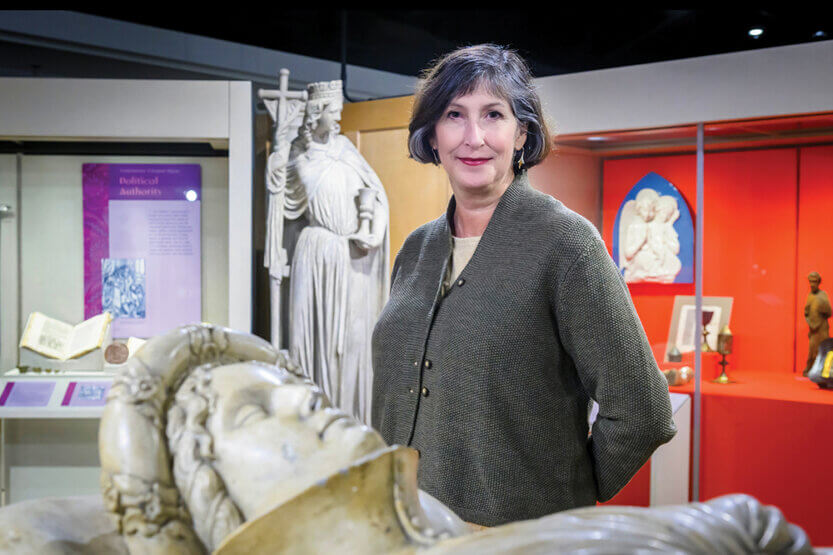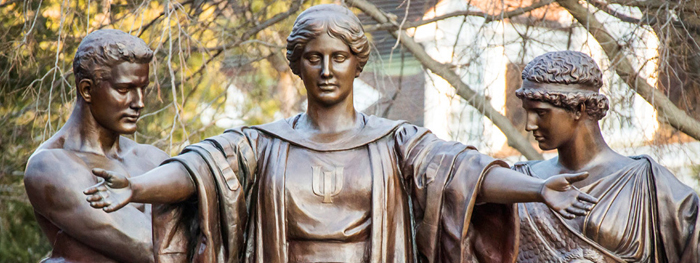In Class: Middle Ager
 “The Middle Ages covers at least a thousand years,” says medieval studies professor Carol Symes. (Image by Fred Zwicky)
“The Middle Ages covers at least a thousand years,” says medieval studies professor Carol Symes. (Image by Fred Zwicky) The Middle Ages covers at least a thousand years. It’s a huge period of time, and a lot is happening—knights in shining armor and chivalry and cathedrals, but also disease and lack of sanitation and strict social hierarchies. But the people who lived during this period didn’t think of themselves as medieval. They lived in their own complicated, fascinating present. They didn’t wake up and say, “Oh my God, I’m living in the Middle Ages. I can’t wait for the Renaissance.” If there’s one thing I want my students to take away from my classes, it’s a sense of empathy for and kinship with these people.
One of the common misconceptions about the Middle Ages is that most people are tied to the land in a very rigid feudal society. But in the 11th and 12th centuries, the Church mandates that every large town has to have a free school for boys. If your parents can spare you from work on the farm or in the shop, you can get a free education. That’s a ticket to the universities (another medieval invention) or to a job with a royal bureaucracy or to opening your own business.
Medieval towns also observe a very old Roman law: If you establish residency for a year-and-a-day, you are a citizen of the town and are no longer bound by whatever obligations you might have—for example, as the son of a serf. The American dream of social mobility and migration is very much a medieval phenomenon.
In medieval Scandinavian society, there is no vocabulary for male and female. Obviously, there are biological sexes, men and women, but they do not have a binary gender dynamic. Instead, they have ideas of strength and competence and of weakness and incapacity. For example, if you are biologically female you can, depending on how you act in society and how much power you accumulate, function in masculine ways.
It’s exciting for my students to discover that there are times and places in the past where gender and positionality in society can change and that people aren’t necessarily
put in a single box.
I ask students to find an artifact from their own life and write an essay about it as though they were a historian from the future. What are these people’s values? What kind of society do they live in? Why would they produce this type of artifact? It helps give the students a perspective on how not everything that surrounds us is going to survive for a thousand years.
Edited and condensed from an interview on Jan. 11, 2023.

